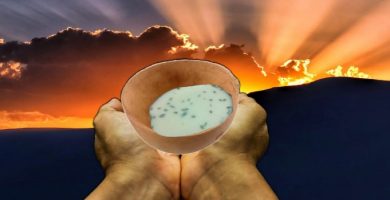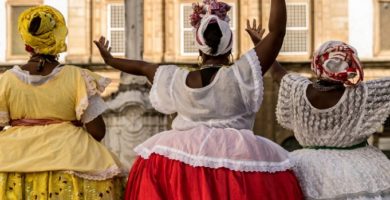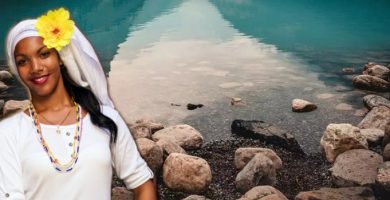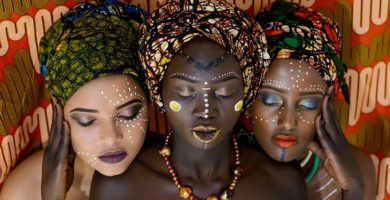
Since ancient times in different cultures and religions the dead have been surrendered and worshiped.
Also in the Yoruba religion, homage is paid to the ancestors and the recently deceased, helping them to reach heaven by offering them sacred rituals.
In the Rule of Osha-Ifá (Santeria) When a consecrated person dies, different ceremonies are held, starting with the Ituto, then the breakfast ritual is performed, followed by the ceremony of removing tears and finally the funeral service.
It is necessary that all these ceremonies are carried out with respect under the rules of the Yoruba religion.
Superficially I will explain with the permission of my elders and my Guardian Angel the ceremony of removing or drying the tears of the dead.
What does “Remove Tears” mean?
Taking away tears refers to a ceremony that is performed when an orisha has been inherited. That is, tears are removed from the orishas that belonged to a deceased person and who has decided to stay with another person on Earth.
When the godmother or godfather who delivered the orishas dies, the godchildren must perform this ceremony:
This ceremony cannot be suppressed under any circumstances, because then the godchildren of the deceased will not be able to use the Orishas for any other ceremony, so that it is better understood, the Orishas of the godchildren will not be able to give birth, that is, they cannot consecrate to no one.
- In the event that an Orisha of the godfather or godmother stays and tears away, they cannot be used for any ritual, these remain to take care of the person who has been destined.
- This ritual is carried out at 9 days, never before these days, and the godchildren of the deceased will do it.
- All godchildren of the godfather or godmother who dies, without exception, have to comply with this ceremony.
- In addition, they must be in mourning for 3 months, they cannot do anything about Osha until this time has passed.
Why not use the Orishas for the duration of the mourning process?
Simply because the existing bond between spirit and its Oshas and Orishas still exists, that is, it is their mother or father and we must keep the same respect for them as for the deceased.
Main objective of removing tears:
Removing or drying the tears of the Oshas and Orishas of the godchildren and of their godmother or godfather upon death, is intended to remove the mourning and mourning from the deities that caused the departure of their Omo (son) from earth.
This godmother or godfather was the one who gave birth to them, gave birth to them, they are their "stone mother" as they say, that day we were reborn again and we must respect them, because it is not a simple loss.
What happens if the tears are not removed?
If the Orishas or Oshas are used without removing the tears it is a great lack of respect and if it is done, they must face bad consequences for their way of acting.
Do the Oshas and Orishas feel that loss?
It may be that much more than us. Let us remember that the Oshas and Orishas feel like us, they are matter and full of energy.
If the tears are not removed, their wailing will not cease for the people who were born to them. They are a whole, a union of each element and substance existing in nature, of everything created.
What ingredients are necessary for the ritual of removing tears?
The most recommended herbs are Alamo, Bledo Blanco, Prodigiosa or Immortelle, Elderberry white, Almacigo, Ceiba, and Corazón de paloma.
Elements such as:
- Corojo butter, smoked fish, smoked jutía, toasted corn,
- honey, and honey,
- Holy Water, cascarilla, candles,
- brandy or white rum,
- guinea pepper,
- black rooster for the spirit of the deceased,
- flowers of different colors, among other ingredients.
How is this ceremonial prepared?
In broad strokes with the permission of my elders and what they administer to me:
- The deceased will be prepared as if it were the consecration ceremony.
- An Oriate must preside over and conduct this ceremony alongside 4 or more Oloshas.
- The Oshas and Orishas must be on the ground with their respective snails next to them.
- The Oriate first of all will give coconut to Eggun (spirits) and then the black rooster is sacrificed to the spirit.
- Then come the songs and prayers to Eggún, always mentioning that that person has already died.
- This Gold to Eggun must be extensive in case the dead man is attached, since he needs to march and rise.
Then the omieros (water prepared with plants) are made with the ewes (herbs) according to the Oshas and Orishas that the deceased has, and work begins on the rinsing process or ceremony.
What is done at the rinsing ceremony?
All those herbs at the end are removed and go to a separate plate that will go to the foot of each Osha and Orisha.
In this ceremony it is important to have plenty of fresh water.
- Everything that the Oshas and Orishas contain within their tureens should be put in a container in front of each of them.
- With the herbs those tureens are scrubbed well inside and out, also the stones, the snails and the tools of each one of them.
- Afterwards everything is rinsed with fresh water many times and they are put back into their tureens.
- When all are rinsed, the sacrifice of the animals begins, which would be feathered animals such as a hen or rooster, as appropriate to the Osha and Orisha.
- After the animals are sacrificed, they are left to rest for a few hours, they are rinsed with water and a fruit is offered to each one.
Thus the ceremony of removing the tears from the Oshas and Orishas is concluded.
It is a very painful ritual, but it must be carried out with great seriousness, respect and complying with the strict rules in each step that is carried out in the ceremony, without any omission.
Learn more about funeral ceremonies and other services:

What is the Breakfast Ceremony and how is it done? The Osha-Ifá rule

What is the Ituto Ceremony and how is it performed in the Osha-Ifá Rule?

What is the Ñangareo? Sacred ceremony that honors the sun and refreshes us

The Santeria and the act of cremation Santeros must NOT be cremated!

Why is the Drawer to the Dead a Sacred Ceremony in religion?

Ceremony of offering food to the earth. Do you know how it came about?

Learn all about the Ebbó «Religious cleansing ceremony»

What is the Iyaworaje? The Initiation of the Santero in the Osha

Why can't the santeros get wet in the rain?

What is an Aleyus? The future Santero

Who are the Santeros? The Yoruba hierarchy




